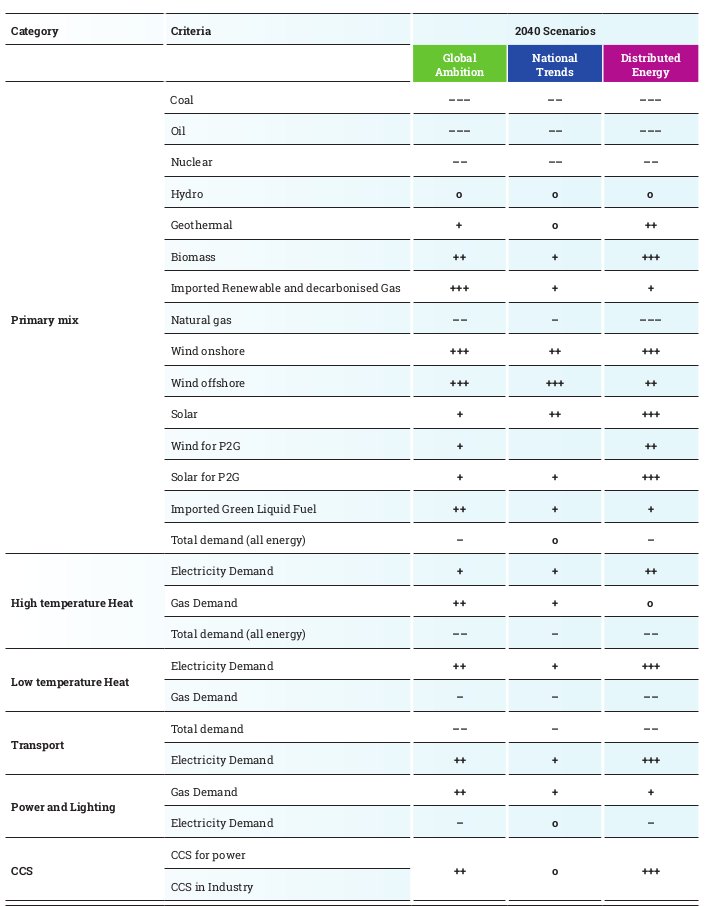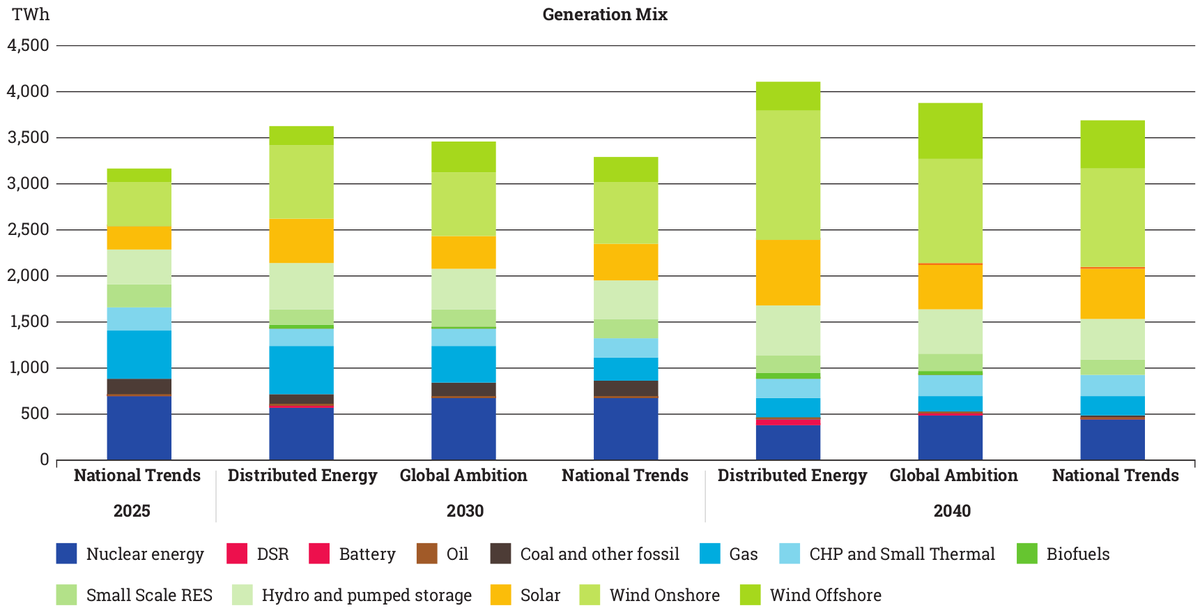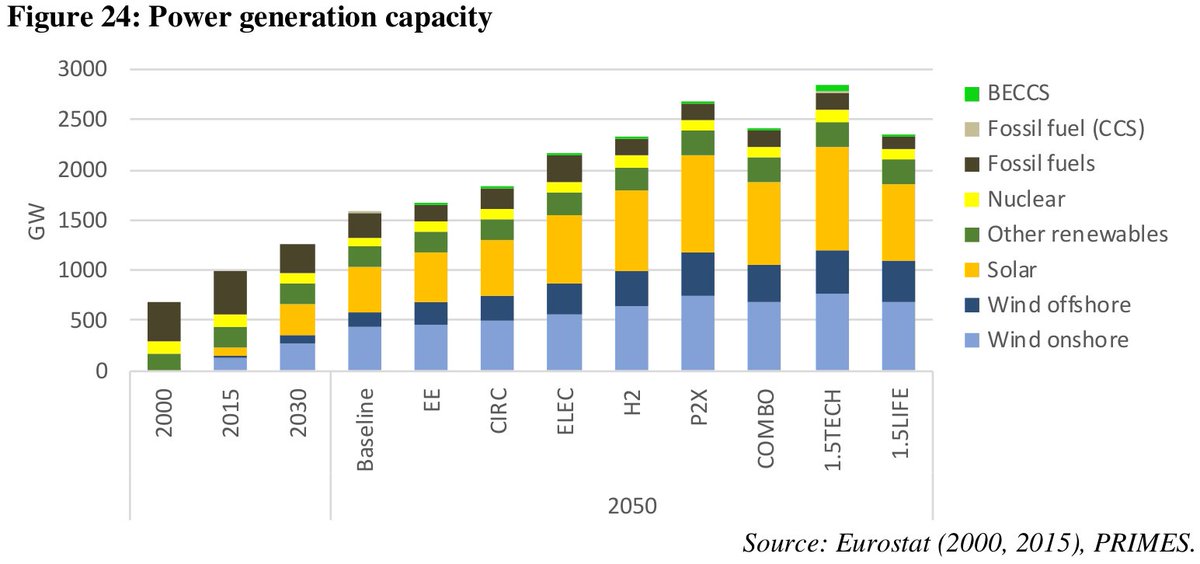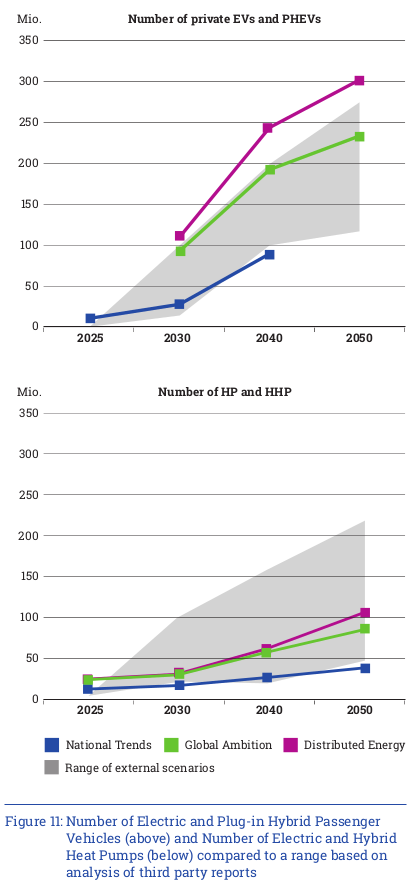The European electricity and gas grid operators @ENTSO_E and @ENTSOG have released their new scenarios for 2020-2050, used for grid planning
1st time for TYNDP: 1.5C Paris-compliant scenarios & integrated coupling gas <-> electricity
Quick takes below https://www.entsos-tyndp2020-scenarios.eu/ ">https://www.entsos-tyndp2020-scenarios.eu/">...
1st time for TYNDP: 1.5C Paris-compliant scenarios & integrated coupling gas <-> electricity
Quick takes below https://www.entsos-tyndp2020-scenarios.eu/ ">https://www.entsos-tyndp2020-scenarios.eu/">...
TL;DR: It& #39;s welcome that the guardians of our energy supply are considering ambitious climate action. Scenarios are impressive, but heavy on gas: power-to-gas, biomethane and CCS.
Alternative: more direct electrification with renewables, particular in heating.
Alternative: more direct electrification with renewables, particular in heating.
First off, this is an impressive achievement: getting dozens of TSOs around the table for joint modelling, with often diverging opinions, integrating multiple stakeholder feedback (NGO, academic, COM), and coming out with coherent story lines with numbers on everything is amazing
TSOs are often perceived as conservative (well, they have to keep the lights and heating on) but the level of ambition here is high: two scenarios with net-zero GHG emissions by 2050, 1.5C Paris compliant:
1.5C Paris compliant means here "a carbon budget to stay below +1.5°C at the end of the century with a 66.7% probability". They have chosen a path which requires 15 GtCO2 net negative emissions between 2050 and 2100 (current EU GHG emissions are around 4.5 GtCO2eq per year)
There are 3 scenarios:
National Trends (NT): still includes a lot of renewables
Global Ambition (GA): 1.5C, more offshore wind, big import of renewable e-fuels
Distributed Energy (DE): 1.5C, more solar, heat pumps, EVs, local power-to-gas (P2G), biomass
National Trends (NT): still includes a lot of renewables
Global Ambition (GA): 1.5C, more offshore wind, big import of renewable e-fuels
Distributed Energy (DE): 1.5C, more solar, heat pumps, EVs, local power-to-gas (P2G), biomass
Electricity generation is dominated by wind and solar, but the overall level of electricity generation does not rise as much above today as scenarios from other modelling exercises, indicating less ambitious electrification of other energy sectors:
Compare e.g. the European Commission& #39;s Long-Term Strategy (LTS)
https://ec.europa.eu/clima/policies/strategies/2050_en
which">https://ec.europa.eu/clima/pol... sees more than a doubling of power generation by 2050 in its ambitious 1.5C scenarios (NB: above graphic from TYNDP goes only to 2040, but it& #39;s still way below):
https://ec.europa.eu/clima/policies/strategies/2050_en
which">https://ec.europa.eu/clima/pol... sees more than a doubling of power generation by 2050 in its ambitious 1.5C scenarios (NB: above graphic from TYNDP goes only to 2040, but it& #39;s still way below):
Compared to e.g. the LTS, even accounting for the fact we& #39;re comparing 2040 to 2050:
This can be tracked down to less ambition in direct electrification, particular in building heating, but also in industry and transport where there is still large gas demand.
Here you can see that the heat pump penetration is on the low side in TYNDP compared to other scenarios:
Here you can see that the heat pump penetration is on the low side in TYNDP compared to other scenarios:
To reach the 1.5C target without high electrification, they& #39;ve gone down a high gas route, with lots of biomethane, power-to-gas, CCU/S and imported e-fuels.
Gas demand does not drop significantly compared to today:
Gas demand does not drop significantly compared to today:
Why might this be problematic?
Have to make sure the big increase in biomethane can be done sustainably.
P2G leads to efficiency losses versus direct electrification (but also offers more flexibility).
P2G, long-distance e-gas transport, CCU/S all need more demonstration.
Have to make sure the big increase in biomethane can be done sustainably.
P2G leads to efficiency losses versus direct electrification (but also offers more flexibility).
P2G, long-distance e-gas transport, CCU/S all need more demonstration.
To summarise: fantastic to have joint, sector-coupled planning, huge improvement over previous TYNDP scenarios, a great basis for future.
Still room for more scenarios with higher electrification rates, less gas.
Important role for 3rd parties to propose alternative scenarios.
Still room for more scenarios with higher electrification rates, less gas.
Important role for 3rd parties to propose alternative scenarios.

 Read on Twitter
Read on Twitter










